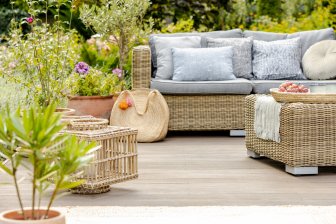A video that was posted to Facebook earlier this week has gone viral for its sneeze-triggering shot of a tree emitting a “pollen bomb,” undoubtedly sending allergy sufferers running for their closest Kleenex box.

New Jersey resident Jennifer Henderson posted the video that shows her husband, Eric, driving a backhoe into a tree and unleashing an explosive cloud of pollen into the air. Weather Channel meteorologist Mike Seidel dubbed it a “pollen bomb.”
READ MORE: Allergy season is getting longer in parts of Canada. Blame climate change, experts say
As the video continues to accrue more views — it’s over five million now — others are rushing to explain how this particular tree could emit so much pollen. It turns out, it’s because the tree is male.
Like humans, trees and plants have sperm and egg cells, which means they are male or female (although some varieties have both). The trees with male gametes contain sperm cells within a pollen grain, so when pollen is released into the air in the springtime, you can blame the males.
Adding to that issue is the fact that most urban centres plant male trees throughout their cities because they’re considered “cleaner.” In Canada, it’s estimated that anywhere from 74 to 98 per cent of trees in urban areas are male.
Female trees, although pollen-free, tend to shed seedpods, nuts and other debris that mess up the sidewalks, but male trees don’t. As a result, urban planners and nurseries opt for the males because they keep the sidewalks clean, but the trade-off is itchy eyes and runny noses for allergy sufferers.
- 3 women diagnosed with HIV after ‘vampire facials’ at unlicensed U.S. spa
- Posters promoting ‘Steal From Loblaws Day’ are circulating. How did we get here?
- Solar eclipse eye damage: More than 160 cases reported in Ontario, Quebec
- Investing tax refunds is low priority for Canadians amid high cost of living: poll
Tom Ogren, a California-based horticulturalist, calls this “botanical sexism.” It’s a point that was driven home for him when he set out to photograph trees of both sexes around his city and found it very difficult to locate any female varieties.
READ MORE: Allergy season in Vancouver is now 203 days longer
“I thought maybe my city was unusual,” he said to Global News in 2012. “But the same weirdly skewed population showed up in city after city – anywhere that the trees had been purchased from growers instead of growing naturally. It doesn’t occur in rural areas or small towns.”
At the time, Ogren was in Ottawa on a country-wide tour with the makers of Reactine, and after surveying the the trees in our nation’s capital, he found that the majority were male. Which spells trouble for Ottawa’s allergy sufferers.
But it doesn’t stop in Ottawa. Vancouver has been called out for being one of the worst cities in Canada for people who have allergies because its lush, green landscape is largely populated by male alder and birch trees. Same goes for any region that has maple, willow, birch, ash, pine and oak trees. In other words, all of Canada.
So, what can we do? Ogren suggests that city planners consider the pollen-making ability of a tree before deciding what to plant, and he advises home gardeners to find out the sex of a neighbour’s tree before doing their own planting. Consciously planting a female variety could, at the very least, lessen the male’s impact.
A tree needs to reach a certain stage of maturity before it discloses its sex via pollen or fruit, but it sure will make for an interesting conversation with your neighbour.






Comments